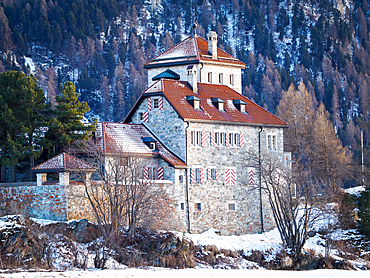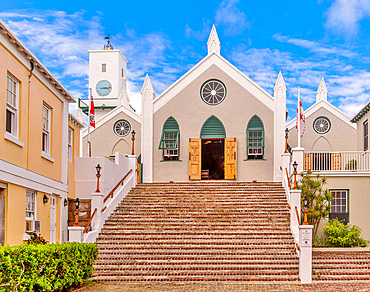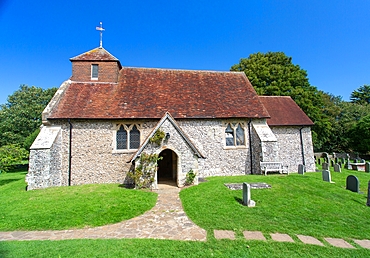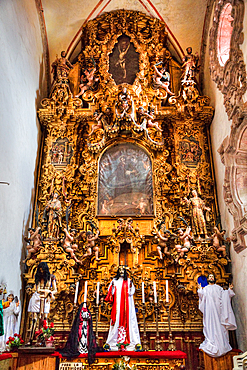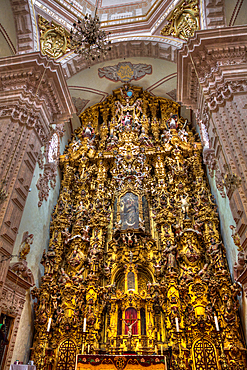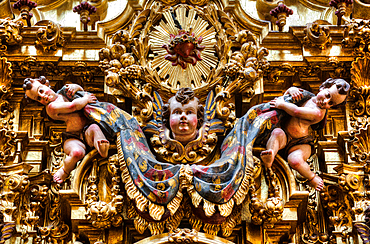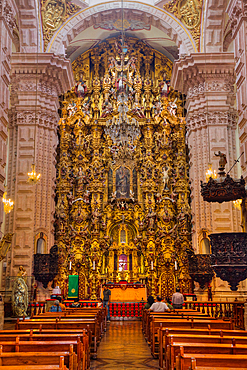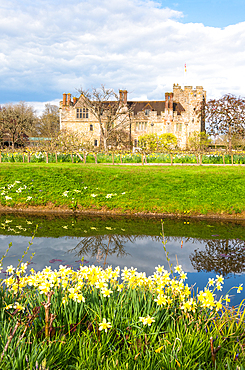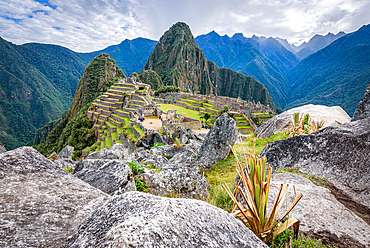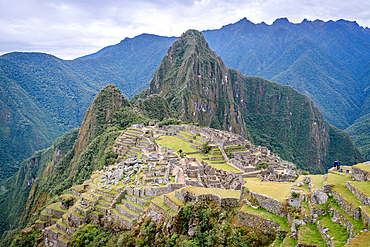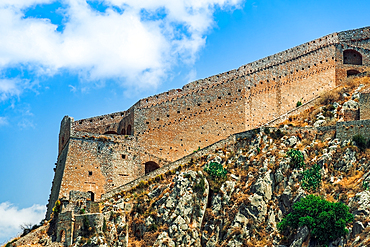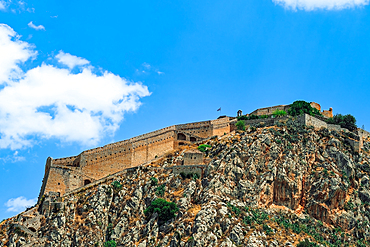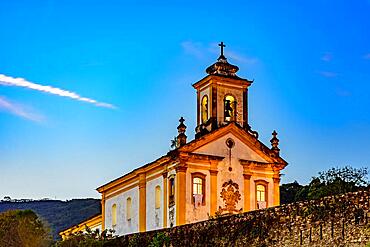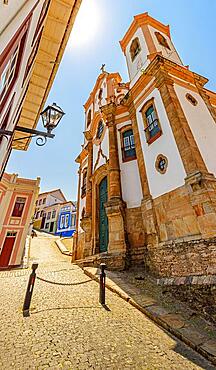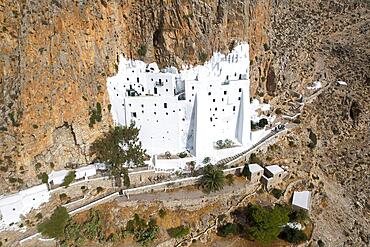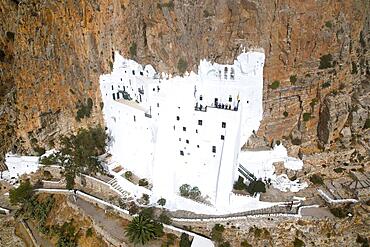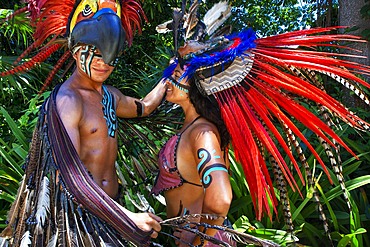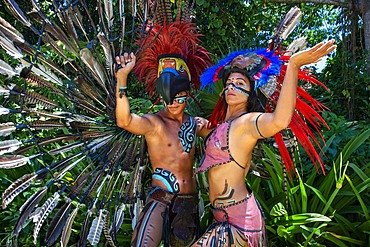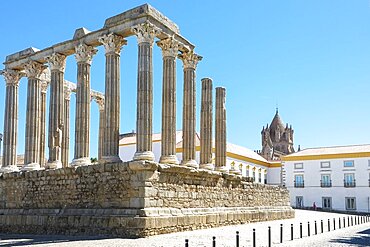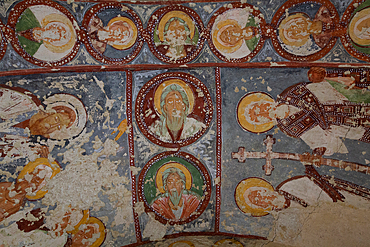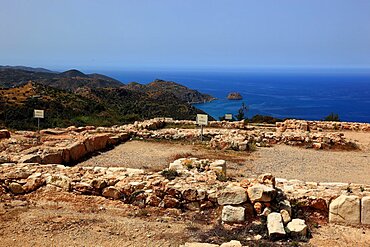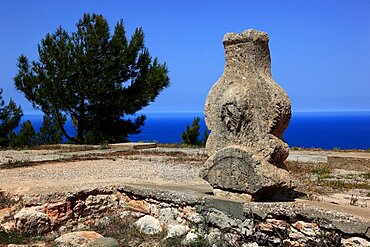Recent searches
Loading...
801-3567 - Euphrasian Basilica, 6th Century, UNESCO World Heritage Site, Porec, Croatia
801-3513 - Basilica of Santa Maria del Canneto dating from the 6th century, Pula, Croatia, Europe
801-3510 - Clock Tower and Cathedral of the Assumption of the Blessed Virgin Mary dating from the 4th century, Pula, Croatia, Europe
801-3508 - Cathedral of the Assumption of the Blessed Virgin Mary, dating from the 4th century, Pula, Croatia, Europe
1242-552 - A castle-like early 20th-century house by Lake Silvaplana, Switzerland, Europe
1358-237 - St. Peter's Church, the oldest Anglican Church still in use outside Britain, dating back to the 17th century, St. George's, UNESCO World Heritage Site, Bermuda, Atlantic, North America
1358-225 - St. Peter's Church, built in the 12th century, one of only three churches in Sussex with a round tower, Southease, near Lewes, East Sussex, England, United Kingdom, Europe
1358-224 - St. Peter's Church, built in the 12th century, one of only three churches in Sussex with a round tower, Southease, near Lewes, East Sussex, England, United Kingdom, Europe
1243-472 - View of spiral staircases at the Initiation Well, purportedly used for ceremonial purposes by Freemasons in the 19th century, at Quinta da Regaleira, Sintra, Portugal, Europe
1243-471 - View of spiral staircases at the Initiation Well, purportedly used for ceremonial purposes by Freemasons in the 19th century, at Quinta da Regaleira, Sintra, Portugal, Europe
832-403196 - Replica of a 16th century caravel in Vila do Conde, Portugal, Europe
685-2803 - High Street and 15th century bookshop, Lewes, East Sussex, England, United Kingdom, Europe
1358-211 - The 19th century Belle Tout lighthouse, now disused, at the cliff edge near Beachy Head, South Downs National Park, East Sussex, England, United Kingdom, Europe
1358-209 - The 11th century Church of St. Mary The Virgin at Friston, South Downs National Park, East Sussex, England, United Kingdom, Europe
1358-208 - The 11th century Church of St. Mary The Virgin at Friston, South Downs National Park, East Sussex, England, United Kingdom, Europe
1358-207 - The 11th century Church of St. Mary The Virgin at Friston, South Downs National Park, East Sussex, England, United Kingdom, Europe
801-3483 - Casa de Los Azulejos (House of Blue Tiles), 18th century, Mexico City, Mexico, North America
801-3458 - Altarpiece, 18th century Spanish Baroque style, Church of Santa Prisca de Taxco, founded 1751, UNESCO World Heritage Site, Taxco, Guerrero, Mexico, North America
801-3454 - Altarpiece, 18th century Spanish Baroque style, Church of Santa Prisca de Taxco, founded 1751, UNESCO World Heritage Site, Taxco, Guerrero, Mexico, North America
801-3453 - Sculptures, angels, altarpiece, 18th century Spanish Baroque style, Church of Santa Prisca de Taxco, founded 1751, UNESCO World Heritage Site, Taxco, Guerrero, Mexico, North America
801-3452 - Altarpiece, 18th century Spanish Baroque style, Church of Santa Prisca de Taxco, founded 1751, UNESCO World Heritage Site, Taxco, Guerrero, Mexico, North America
1352-120 - Hever Castle, 13th century double moated castle, and childhood home of Anne Boleyn, Kent, England, United Kingdom, Europe
1352-106 - London skyline as seen from the viewing platform of Severndroog Castle, 18th century Gothic tower in Greenwich, London, England, United Kingdom, Europe
826-780 - St. Aidan's Church, a 12th century place of worship, a key location in spreading Christianity during the Anglo-Saxon era, and its churchyard, Bamburgh, Northumberland, England, United Kingdom, Europe
826-777 - Anglo-Saxon Cross in the churchyard of St. Aidan's Church, a 12th century place of worship and a key location in the introduction of Christianity during Anglo-Saxon times, Bamburgh, Northumberland, England, United Kingdom, Europe
1358-197 - The Convict Cemetery, containing graves of 19th century convicts transported from UK, 13 marked, Sandys, Bermuda, Atlantic, North America
1358-196 - The Convict Cemetery, containing graves of 19th century convicts transported from UK, 13 marked, Sandys, Bermuda, Atlantic, North America
1358-194 - The Convict Cemetery, containing graves of 19th century convicts transported from UK, 13 marked, Sandys, Bermuda, Atlantic, North America
1358-195 - The Convict Cemetery, containing graves of 19th century convicts transported from UK, 13 marked, Sandys, Bermuda, Atlantic, North America
1358-193 - The Convict Cemetery, containing graves of 19th century convicts transported from UK, 13 marked, Sandys, Bermuda, Atlantic, North America
1358-192 - The Convict Cemetery, containing graves of 19th century convicts transported from UK, 13 marked, Sandys, Bermuda, Atlantic, North America
1358-191 - Monument to the Selkirk Settlers, erected in 2008, to commemorate the 19th century Scots who settled after the Highland Clearances, Waterfront Drive, Winnipeg, Manitoba, Canada, North America
1358-187 - The Scots Monument, erected in 1993 to commemorate 19th century Scottish settlers led by the Earl of Selkirk, in Waterfront Drive, Winnipeg, Manitoba, Canada, North America
1174-11468 - The path to Machu Picchu, the high mountain capital of the Inca tribe, a 15th century citadel site, buildings and view of the plateau and Andes mountains.
1174-11467 - The path to Machu Picchu, the high mountain capital of the Inca tribe, a 15th century citadel site, buildings and view of the plateau and Andes mountains.
1174-11466 - The path to Machu Picchu, the high mountain capital of the Inca tribe, a 15th century citadel site, buildings and view of the plateau and Andes mountains.
765-2292 - Bernini's 17th century Colonnade and statues of saints, Piazza San Pietro (St. Peter's Square), Vatican City, UNESCO World Heritage Site, Rome, Latium (Lazio), Italy, Europe
1278-320 - The 18th-century Palamidi Fortress citadel with a bastion on the hill, Nafplion, Peloponnese, Greece, Europe
1278-319 - The 18th century Palamidi Fortress citadel with a bastion on the hill, Nafplion, Peloponnese, Greece, Europe
1358-175 - The Long Man of Wilmington, a hill carving on the Sussex Downs, possibly Neolithic, 15th century or later, above the village of Wilmington, East Sussex, England, United Kingdom, Erope
832-400655 - Aerial view of Harbor interchange and Century Freeway traffic with downtown Los Angeles, USA, North America
832-400231 - Streets of cobblestone and old houses in colonial style on the streets of the old and historic city of Paraty founded in the 17th century on the coast of the state of Rio de Janeiro, Brazil, Brasil, South America
832-400200 - Old historic chapel in 17th century colonial style in the city of Sabara in Minas Gerais, Brazil, Brasil, South America
832-400175 - Old and historic 18th century church with its facade illuminated at dusk in the city of Ouro Preto, Minas Gerais, Brazil, Ouro Preto, Minas Gerais, Brasil, South America
832-400171 - One of the many historic churches in Baroque and colonial style from the 18th century in the city of Ouro Preto in Minas Gerais, Brazil, Ouro Preto, Minas Gerais, Brasil, South America
832-400208 - The crying saint. Sculpture in 18th century Brazilian Baroque sacred art surrounded by angels and present in the interior of the rich churches of Ouro Preto in Minas Gerais, Brasil
1278-308 - The 16th century fountain Fontana del Nettuno, with Neptune statue, Bologna, Emilia Romagna, Italy, Europe
1278-307 - Town Hall facade, Palazzo d'Accursio, 14th century, Bologna, Emilia Romagna, Italy, Europe
832-399392 - Panagia Chozoviotissa is an Orthodox rock monastery on the Greek Cycladic island of Amorgos, said to have been founded in the early 9th century, in the Byzantine era, by monks from Palestine. It is the second oldest monastery in Greece, Amorgos, Greece, Europe
832-399391 - Panagia Chozoviotissa is an Orthodox rock monastery on the Greek Cycladic island of Amorgos, said to have been founded in the early 9th century, in the Byzantine era, by monks from Palestine. It is the second oldest monastery in Greece, Amorgos, Greece, Europe
832-398428 - EAST GRINSTEAD, WEST SUSSEX, UK - MARCH 28 : Wooden carving from the pulpit of St Swithun's Church in East Grinstead West Sussex on March 28, 2022
809-8707 - Saigon Central Post Office, constructed when Vietnam was part of French Indochina in the late 19th century, Ho Chi Minh City, Vietnam, Indochina, Southeast Asia, Asia
1178-44084 - Fes Morocco Al Attarine Madrasa school built in the 14th century
1178-44069 - Marrakech Morocco The Saadian tombs which is the famous royal necropolis from the 16th century Old painted door
1350-6608 - Mexican aztec dress gods at Grand Palladium White Sand Resort and Spa in Riviera Maya, Yucatan Peninsula, Quintana Roo, Caribbean Coast, Mexico.
Aztec clothing was generally loose fitting and did not completely cover the body. When the Spanish arrived in Mexico, the people were surprised to see them in their full armour, with only their faces exposed.
Aztec clothes were generally made of cotton (which was imported) or ayate fiber, made from the Maguey Cactus (also called the Century Plant or American Aloe). Women would weave the fibers into clothing, a task girls were taught as young teenagers. Because of their vast trading network, the Aztecs were able to make use of a beautiful array of dyes, creating the brilliant
1350-6595 - Mexican aztec dress gods at Grand Palladium White Sand Resort and Spa in Riviera Maya, Yucatan Peninsula, Quintana Roo, Caribbean Coast, Mexico.
Aztec clothing was generally loose fitting and did not completely cover the body. When the Spanish arrived in Mexico, the people were surprised to see them in their full armour, with only their faces exposed.
Aztec clothes were generally made of cotton (which was imported) or ayate fiber, made from the Maguey Cactus (also called the Century Plant or American Aloe). Women would weave the fibers into clothing, a task girls were taught as young teenagers. Because of their vast trading network, the Aztecs were able to make use of a beautiful array of dyes, creating the brilliant
1350-6664 - Inside Basílica de Santa María la Real de Covadonga catholic church in Cangas de Onis, Picos de Europa, Asturias, Spain, Europe.
In 1777 a fire destroyed the old temple, which stood adjacent to the Holy Cave where Our Lady of Covadonga is revered. It was then decided to raise a new church as a monumental sanctuary, raising donations from all of Spain; the plan was opposed by the local council, as the canons wanted to rebuild the temple of the Holy Cave and build an ambitious sanctuary that had once been designed by Ventura Rodríguez, but never completed. One century later, the project was resumed by King Alfonso XII of Spain, who was interested in completing this work. The classic design of Ventura Rodríguez was very difficult and expensive and was replaced by a new neo-Medieval design.
1350-6663 - Our Lady of Covadonga. The Blessed Virgin Mary, and a Marian shrine devoted to her at Basílica de Santa María la Real de Covadonga catholic church in Cangas de Onis, Picos de Europa, Asturias, Spain, Europe.
In 1777 a fire destroyed the old temple, which stood adjacent to the Holy Cave where Our Lady of Covadonga is revered. It was then decided to raise a new church as a monumental sanctuary, raising donations from all of Spain; the plan was opposed by the local council, as the canons wanted to rebuild the temple of the Holy Cave and build an ambitious sanctuary that had once been designed by Ventura Rodríguez, but never completed. One century later, the project was resumed by King Alfonso XII of Spain, who was interested in completing this work. The classic design of Ventura Rodríguez was very difficult and expensive and was replaced by a new neo-Medieval design.
1131-1814 - The 15th century caravanserai of Tash Rabat, Naryn Region, Kyrgyzstan, Central Asia, Asia
1178-43916 - Portugal, Evora, Roman Temple of Diana from 1 century AD
1178-43913 - Portugal, Evora, Roman Temple of Diana from 1 century AD
844-28100 - View of 16th-century Gothic Cathedral, Santo Domingo, Dominican Republic, West Indies, Caribbean, Central America
844-28098 - View of 16th-century Gothic Cathedral, Santo Domingo, Dominican Republic, West Indies, Caribbean, Central America
801-3276 - Hazart-Khizr Mosque Complex, , Originally Built 8th Century, Samarkand, Uzbekistan
801-3277 - Hazart-Khizr Mosque Complex, , Originally Built 8th Century, Samarkand, Uzbekistan
801-3274 - Hazart-Khizr Mosque Complex, , Originally Built 8th Century, Samarkand, Uzbekistan
844-27673 - View of Gun Cabinet & Hospital 14th Century in Argyrokastro Square, Old Rhodes Town, UNESCO World Heritage Site, Rhodes, Dodecanese, Greek Islands, Greece, Europe
801-3227 - Egyptian Obelisk of Theodosuis, erected 4th Century AD, Sultanahmet Square, Istanbul, Turkey
1243-389 - Aerial drone view of Belem Tower, UNESCO World Heritage Site, a 16th century fortification on the Tagus River, Belem, Lisbon, Portugal, Europe
1243-387 - Aerial drone view of Belem Tower, UNESCO World Heritage Site, a 16th century fortification on the Tagus River, Belem, Lisbon, Portugal, Europe
801-3194 - Al Nazar Church (Cave Church), 10th century, Goreme, UNESCO World Heritage Site, Nevsehir Merkez, Nevsehir, Anatolia, Turkey, Asia Minor, Asia
801-3193 - Frescoes, Al Nazar Church (Cave Church), 10th century, UNESCO World Heritage Site, Goreme, Nevsehir Merkez, Nevsehir, Anatolia, Turkey, Asia Minor, Asia
1184-7706 - Aerial of the 14th century Santuari de la Mare de Deu des Puig, UNESCO World Heritage Site, Serra de Tramuntana, Pollenca, Mallorca, Balearic Islands, Spain, Mediterranean, Europe
1184-7705 - Aerial view over Pollenca from the 14th century Santuari de la Mare de Deu des Puig, Mallorca, Balearic Islands, Spain, Mediterranean, Europe
1184-7709 - Aerial of the 14th century Santuari de la Mare de Deu des Puig, UNESCO World Heritage Site, Serra de Tramuntana, Pollenca, Mallorca, Balearic Islands, Spain, Mediterranean, Europe
1131-1773 - The 18th century Fort Conde de Lippe (Our Lady of Grace Fort) Gate, UNESCO World Heritage Site, Elvas, Alentejo, Portugal, Europe
1131-1770 - The 16th century Amoreira Aqueduct, UNESCO World Heritage Site, Elvas, Alentejo, Portugal, Europe
1131-1768 - The 16th century Amoreira Aqueduct, UNESCO World Heritage Site, Elvas, Alentejo, Portugal, Europe
1131-1772 - The 17th century Saint Lucy (Saint Luzia) Fort, UNESCO World Heritage Site, Elvas, Alentejo, Portugal, Europe
1131-1775 - The 18th century Fort Conde de Lippe (Our Lady of Grace Fort), UNESCO World Heritage Site, Artillery piece in the first courtyard, Elvas, Alentejo, Portugal, Europe
1243-381 - The Church of Santa Engracia (National Pantheon), a 17th-century monument, Lisbon, Portugal, Europe
1243-379 - Aerial view of Senhor da Pedra, an 18th century Baroque chapel on Miramar Beach, northern Portugal, Europe
1243-378 - Aerial view of Senhor da Pedra, an 18th century Baroque chapel on Miramar Beach, northern Portugal, Europe
1237-522 - Fabbriche di Vallico, 14th century pedestrian bridge, Turrite Cava stream, Garfagnana, Tuscany, Italy, Europe
1237-521 - Fabbriche di Vallico, Ponte Colandi, 14th century pedestrian bridge, Turrite Cava stream, Garfagnana, Tuscany, Italy, Europe
832-397454 - The Memnon Colossi at Luxor, Arabic el-Colossat or es-Salamat, standing ancient Egyptian colossal statues, 14th century BC, Nile Valley, Thebes-West, Egypt, Africa
832-397295 - Former monastery church of Antifonitis, 12th century Northern Cyprus
832-397306 - Ancient palace complex of Vuni, Vouni, Vounos from the early 5th century BC in the northwest of the island, view of the sea, North Cyprus
832-397291 - Former monastery church of Antifonitis, 12th century interior, frescoes and wall painting on the columns, North Cyprus
832-397298 - Lefkosa, Lefkosia, Nicosia, in the northern part of the capital of Cyprus, the Selimiye Mosque, St. Sophia's Cathedral in the old town, built between 1209 and the middle of the 14th century Mosque, interior, northern Cyprus
832-397300 - Lefkosa, Lefkosia, Nicosia, in the northern part of the capital of Cyprus, the Selimiye Mosque, St. Sophia's Cathedral in the old town, built between 1209 and the middle of the 14th century Northern Cyprus
832-397297 - Lefkosa, Lefkosia, Nicosia, in the northern part of the capital of Cyprus, in the old town, portal of the Bedesten, bazaar building, in the Middle Ages it was the Byzantine church of St. Nicholas, 12th century, Northern Cyprus
832-397305 - Ancient palace complex of Vuni, Vouni, Vounos from the early 5th century BC in the northwest of the island, view of the sea, Courtyard with stele, North Cyprus
832-397299 - Lefkosa, Lefkosia, Nicosia, in the northern part of the capital of Cyprus, the Selimiye Mosque, St. Sophia's Cathedral in the old town, built between 1209 and the middle of the 14th century Mosque, interior, northern Cyprus
832-397293 - Former monastery church of Antifonitis, 12th century Frescoes and wall painting in the altar area, Northern Cyprus
832-397292 - Former monastery church of Antifonitis, 12th century Frescoes and mural painting on the columns, North Cyprus
832-397290 - Former monastery church of Antifonitis, 12th century interior, frescoes and wall painting, Northern Cyprus
1131-1755 - The 18th century historical Aqueduct of the Free Waters (Aguas Livres Aqueduct), Lisbon, Portugal, Europe
805-1499 - Five arches, the remains of 15th century hilltop Saat Kaman (Seven Arches) monument, part of the Champaner complex, Gujarat, India, Asia
805-1497 - Five arches, the remains of 15th century hilltop Saat Kaman (Seven Arches) monument, part of the Champaner complex, Gujarat, India, Asia




